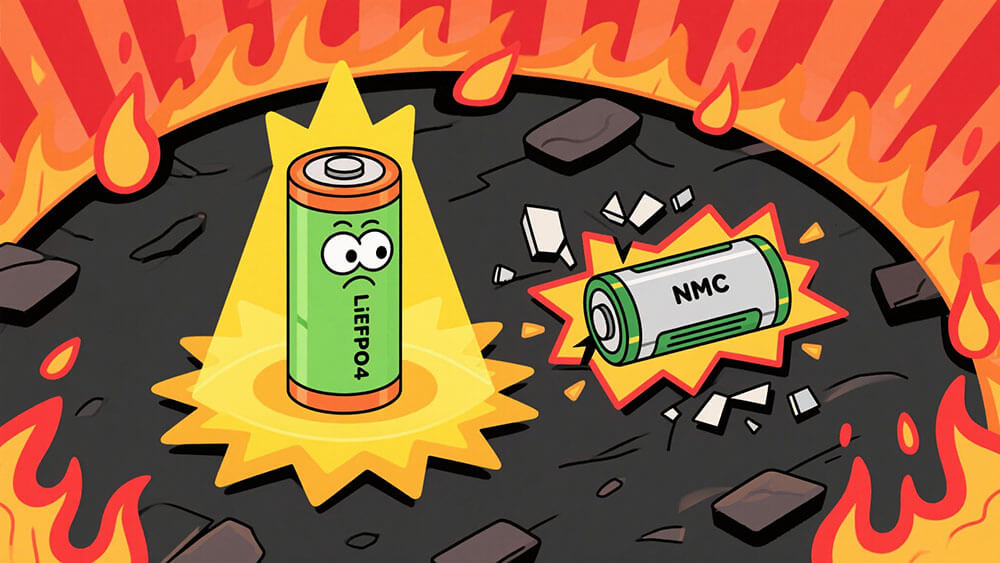
You might notice that NMC batteries deliver better performance in cold conditions due to their high performance and energy density. On the other hand, LiFePO4 batteries excel in safety and durability but struggle in temperature extremes. Understanding your energy needs and priorities is crucial when choosing between NMC VS LiFePO4 Battery in low temperature.
Key Takeaways
NMC batteries work well in the cold. They keep 70-80% of their power at -20°C. This makes them great for high-energy uses.
LiFePO4 batteries are safer and last longer. But they lose more power in extreme cold, keeping only 50-60% at -20°C.
To help batteries in cold weather, use preheaters and insulated storage. These keep the batteries at good temperatures.
Part 1: Overview of NMC and LiFePO4 Batteries
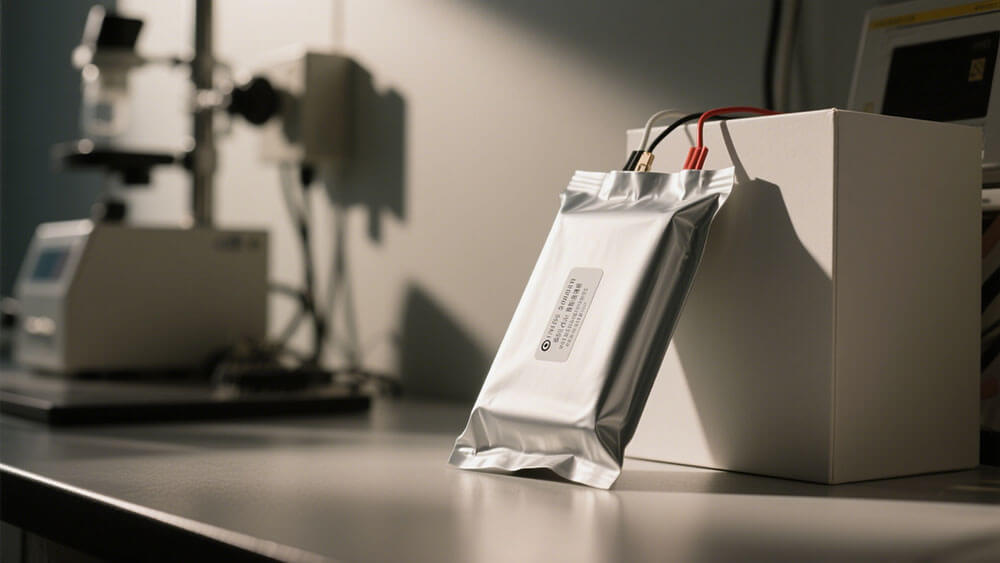
1.1 What Are NMC Batteries?
NMC batteries, short for Nickel Manganese Cobalt batteries, are a type of lithium-ion battery known for their high energy density and versatility. These batteries use a combination of nickel, manganese, and cobalt in their cathodes, which allows them to store more energy in a compact size. You’ll often find NMC batteries in electric vehicles, portable electronics, and renewable energy storage systems. Their ability to deliver consistent performance across a range of temperatures makes them a popular choice for applications requiring high power output.
1.2 What Are LiFePO4 Batteries?
LiFePO4 batteries, or Lithium Iron Phosphate batteries, are another type of lithium-ion battery. They use iron phosphate as the cathode material, which provides exceptional thermal stability and safety. These batteries are less prone to overheating and have a longer lifespan compared to other lithium-ion batteries. You’ll see them used in solar energy storage, backup power systems, and electric vehicles where safety and durability are critical. However, their lower energy density means they are bulkier for the same energy capacity.
1.3 Key Differences Between NMC and LiFePO4 Batteries
Understanding the differences between NMC and LiFePO4 batteries can help you make an informed decision. Here’s a quick comparison:
Feature | NMC Batteries | LiFePO4 Batteries |
|---|---|---|
Price | Generally more expensive (20% higher) | Generally less expensive |
Energy Density | Higher energy density | Lower energy density |
Temperature Tolerance | Balanced performance | Better heat tolerance, struggles in cold |
Safety | More prone to overheating | Highly resistant to overheating |
Cycle Life | 1,200-2,000 cycles | 2,000-5,000 cycles |
A 2020 study from the Journal of the Electrochemical Society highlights that LiFePO4 batteries outlast NMC batteries, offering a longer lifespan despite their lower energy density. This durability makes them ideal for long-term applications.
Part 2: Performance Comparison in Low Temperatures
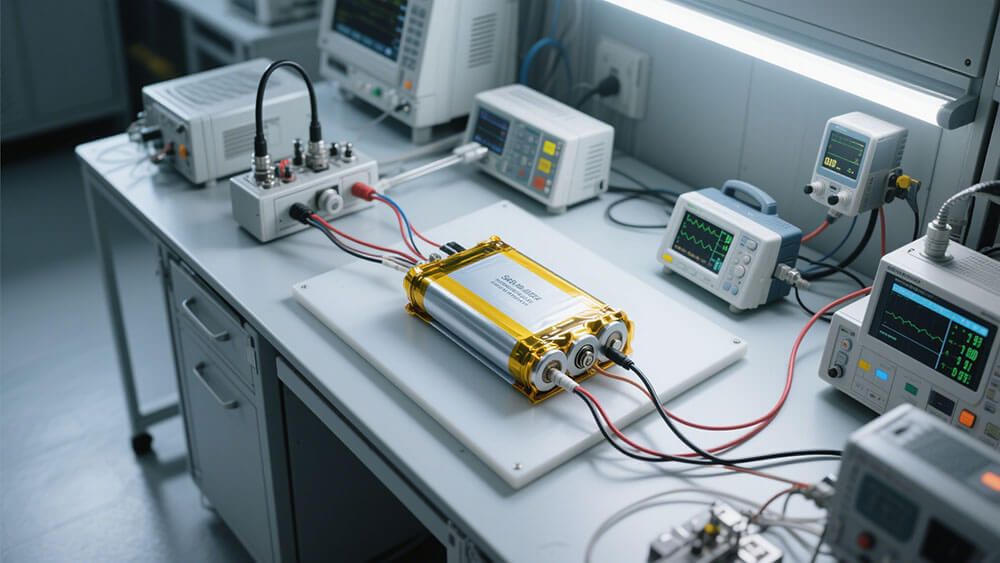
2.1 Energy Density and Efficiency in Sub-Zero Conditions
When operating in sub-zero conditions, energy density and efficiency play a crucial role in determining battery performance. NMC batteries excel in this area due to their higher energy density. This allows them to retain up to 70-80% of their capacity at temperatures as low as -20°C. The layered structure of their cathode materials facilitates efficient lithium-ion movement, even in cold environments. This makes them a reliable choice for applications requiring consistent energy output in low temperatures.
In contrast, LiFePO4 batteries face challenges in maintaining efficiency under similar conditions. Their olivine crystal structure restricts lithium-ion diffusion, leading to a significant drop in capacity. At -20°C, these batteries may retain only 50-60% of their capacity. While this limitation affects their low-temperature performance, their inherent safety and durability often make them suitable for less energy-intensive applications.
2.2 Discharge Rates and Voltage Stability in Cold Weather
Discharge rates and voltage stability are critical for ensuring consistent performance in cold weather. NMC batteries demonstrate superior discharge capabilities, maintaining a stable voltage platform even at low temperatures. This makes them ideal for high-power applications like electric vehicles, where consistent energy delivery is essential.
LiFePO4 batteries, however, experience a noticeable decline in discharge rates and voltage stability in cold conditions. Their internal resistance increases significantly, reducing their ability to deliver power efficiently. In extreme cases, their protection mechanisms may activate, further limiting their usability.
To illustrate, consider the following data on discharge capacity at various temperatures:
Temperature (°C) | Discharge Capacity (mAh g⁻¹) |
|---|---|
-10 | 183.19 |
-30 | 164.8 |
-40 | 143.78 |
-60 | 100.77 |
-60 | 51.94 |
-60 | 137.6 |
This table highlights how discharge capacity diminishes as temperatures drop, emphasizing the importance of selecting the right battery for your specific needs.
2.3 Safety and Thermal Stability in Low Temperatures
Safety and thermal stability are paramount when operating in low temperatures. LiFePO4 batteries outperform NMC batteries in this regard. Their iron phosphate cathode material offers exceptional thermal stability, reducing the risk of overheating or thermal runaway. Even in extreme cold, these batteries maintain a high level of safety, making them a preferred choice for applications where reliability is critical.
NMC batteries, while efficient, require careful management to prevent safety issues. At low temperatures, the increased viscosity of their electrolyte can lead to lithium plating, which poses a risk of short circuits and thermal events. Implementing advanced battery management systems (BMS) can mitigate these risks, ensuring safe operation in cold environments.
2.4 Lifespan and Degradation in Sub-Zero Environments
Cold temperatures can accelerate battery degradation, impacting their lifespan. NMC batteries exhibit moderate degradation in sub-zero environments. Short-term exposure to cold has a manageable effect on their cycle life, but prolonged use in such conditions necessitates robust thermal management systems to preserve their longevity.
LiFePO4 batteries, on the other hand, experience more pronounced degradation in cold climates. Their cycle life diminishes significantly when subjected to deep discharges at low temperatures. However, their chemical stability ensures that they retain a higher capacity over extended cycles compared to NMC batteries, provided they are not exposed to extreme cold for prolonged periods.
Tip: To maximize the lifespan of both battery types in cold conditions, consider using preheating systems or insulated enclosures. These measures can help maintain optimal operating temperatures, reducing the impact of cold on battery performance.
Part 3: Factors Influencing Low-Temperature Performance
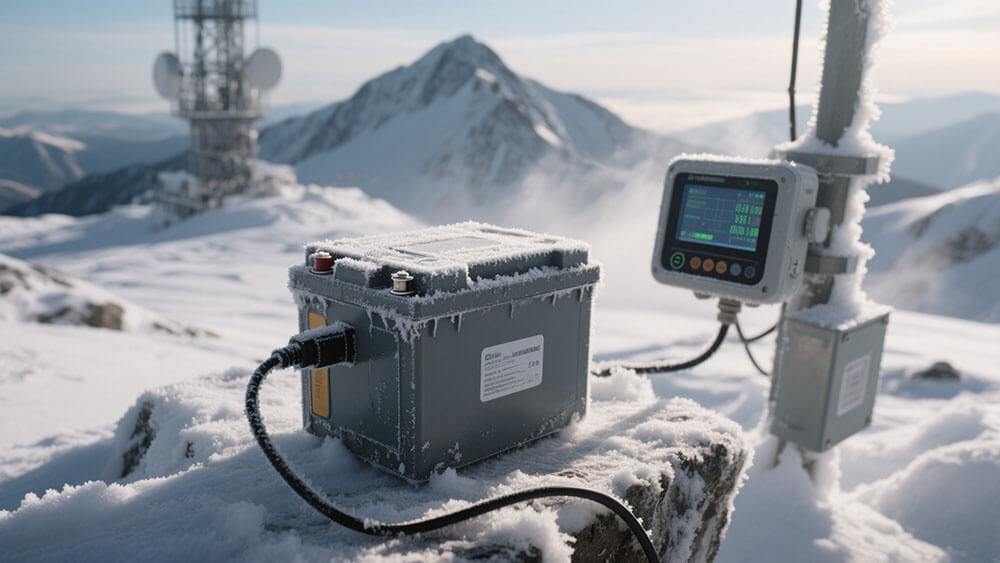
3.1 Cathode Material and Its Role in Cold Weather Behavior
The cathode material plays a pivotal role in determining how batteries perform in cold weather. In LiFePO4 batteries, the olivine crystal structure of iron phosphate limits lithium-ion diffusion at low temperatures. This structural limitation reduces efficiency and capacity retention in sub-zero conditions. On the other hand, nmc batteries benefit from a layered cathode structure that facilitates smoother lithium-ion movement, even in cold climates. This design allows nmc batteries to retain up to 70-80% of their capacity at -20°C, making them more suitable for energy-intensive applications.
3.2 Electrolyte Composition and Temperature Sensitivity
The electrolyte composition significantly impacts battery performance in cold weather. In lfp batteries, the electrolyte’s viscosity increases at low temperatures, restricting ion movement and reducing efficiency. NMC batteries, while also affected by electrolyte viscosity, often incorporate advanced additives to improve low-temperature performance. These additives lower the freezing point and enhance ion conductivity, ensuring better energy output in sub-zero conditions.
Temperature sensitivity varies between lfp and nmc batteries due to differences in electrolyte formulations. You should consider this factor when choosing a battery for applications in cold climates. Optimizing electrolyte composition can mitigate performance losses and improve overall efficiency.
3.3 Battery Management Systems (BMS) for Sub-Zero Operation
Battery management systems (BMS) are essential for maintaining optimal performance in cold environments. In lfp batteries, a BMS can regulate temperature and prevent overcharging, which is critical for safety and longevity. NMC batteries also rely on BMS to manage thermal conditions and prevent lithium plating, a common issue in cold weather.
Modern BMS technology includes features like preheating systems and real-time monitoring. These systems ensure that both lfp and nmc batteries operate efficiently in sub-zero conditions. For applications requiring consistent energy output, investing in a robust BMS can make a significant difference.
Part 4: Practical Recommendations for Choosing the Right Battery
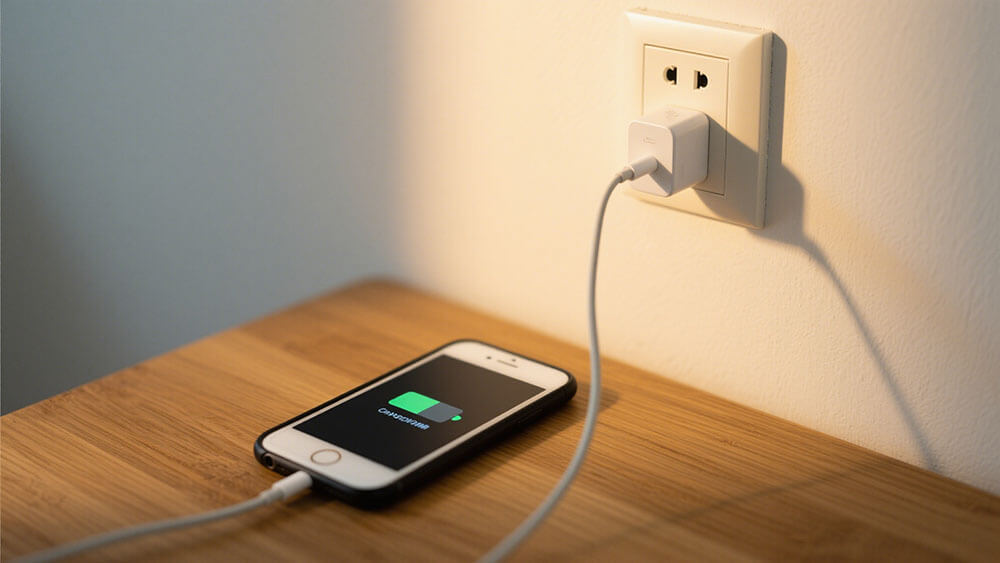
4.1 Applications Where NMC Batteries Excel in Low Temperatures
NMC batteries perform exceptionally well in applications requiring high energy density and consistent power output in cold environments. Their ability to retain up to 70-80% of their capacity at -20°C makes them ideal for energy-intensive operations. You’ll find these batteries particularly useful in electric vehicles operating in sub-zero temperatures. Their stable discharge rates ensure reliable acceleration and sustained performance during long drives in cold climates.
Portable electronics also benefit from NMC batteries. Devices like laptops and smartphones rely on their compact size and high energy density to deliver extended usage times, even in freezing conditions. Renewable energy systems, such as wind or solar installations in colder regions, often incorporate NMC batteries to store and distribute energy efficiently. Their layered cathode structure facilitates smooth lithium-ion movement, ensuring consistent operation in sub-zero temperature environments.
Tip: If your application demands high power output and compact energy storage in cold weather, NMC batteries are a dependable choice.
4.2 Use Cases for LiFePO4 Batteries in Cold Climates
LiFePO4 batteries excel in scenarios where safety and durability take precedence over energy density. While their performance diminishes in extreme cold, you can optimize their operation with proper measures. These batteries are well-suited for backup power systems in remote areas, where reliability and longevity are critical. Their thermal stability ensures safe operation, even in challenging conditions.
Solar energy storage systems often utilize LiFePO4 batteries due to their extended cycle life. In cold climates, insulating the battery or storing it in a warm enclosure can mitigate capacity loss. Electric vehicles designed for moderate power requirements also benefit from LiFePO4 batteries, especially when paired with a battery heating system. This system keeps the battery above 32°F (0°C), limiting capacity loss to just 5% at 14°F (-10°C).
Here are some practical strategies to enhance LiFePO4 battery performance in cold climates:
Use a battery heating system to maintain optimal temperature.
Charge at a low current (0.2C rate) to reduce stress and improve efficiency.
Incorporate low-temperature optimized electrolytes for better ion conductivity.
Insulate the battery or store it in a warm location to prevent cold-related damage.
Regularly monitor battery health using a Battery Management System (BMS).
Note: LiFePO4 batteries are a safer option for applications requiring long-term reliability, provided you implement measures to counteract cold-related performance challenges.
4.3 Optimizing Battery Performance for Sub-Zero Operation
Optimizing battery performance in sub-zero conditions requires a combination of advanced technology and practical strategies. For NMC batteries, you can rely on their inherent high energy density and efficient discharge rates. However, implementing a robust Battery Management System (BMS) is crucial to prevent lithium plating and ensure safe operation. Modern BMS technology includes preheating systems and real-time monitoring, which help maintain optimal performance in freezing temperatures.
LiFePO4 batteries require additional measures to operate effectively in cold climates. Using a new fluorine-containing electrolyte can significantly enhance their performance. This electrolyte prevents freezing at -4°F (-20°C), allowing efficient charge transport of lithium ions. Research has shown that tailoring the atomic structure of electrolyte solvents improves low-temperature conductivity, ensuring better energy output.
Here are some technical guidelines to optimize battery performance in sub-zero conditions:
Incorporate advanced electrolytes to maintain ion conductivity at low temperatures.
Use preheating systems to warm the battery before operation.
Store batteries in insulated enclosures to minimize exposure to extreme cold.
Regularly monitor battery health and temperature using a BMS.
Tip: Combining innovative electrolyte technology with practical storage and heating solutions can maximize battery efficiency and lifespan in cold climates.
NMC batteries excel in cold environments due to their superior energy density and discharge efficiency. You’ll find them more reliable for energy-intensive applications in freezing temperatures.
NMC batteries tolerate cooler temperatures better than LiFePO4 batteries.
LiFePO4 batteries, while safer and more durable, require additional measures to perform effectively in sub-zero conditions.
When selecting a battery, evaluate your energy needs, safety priorities, and environmental conditions.
FAQ
1. How do lifepo4 batteries compare to NMC batteries in cold climates?
LiFePO4 batteries offer better safety but lower energy retention in cold conditions. NMC batteries retain more capacity and perform better in sub-zero temperatures.
2. Can lifepo4 batteries operate efficiently in freezing temperatures?
LiFePO4 batteries struggle in freezing conditions. Their capacity drops significantly at -20°C. Preheating systems or insulated storage can improve their performance.
3. Are lifepo4 batteries suitable for electric vehicles in cold regions?
LiFePO4 batteries can work in electric vehicles with proper thermal management. However, NMC batteries are often preferred for their higher energy density in cold climates.
For custom battery solutions tailored to your drone’s needs, consult Large Power.






